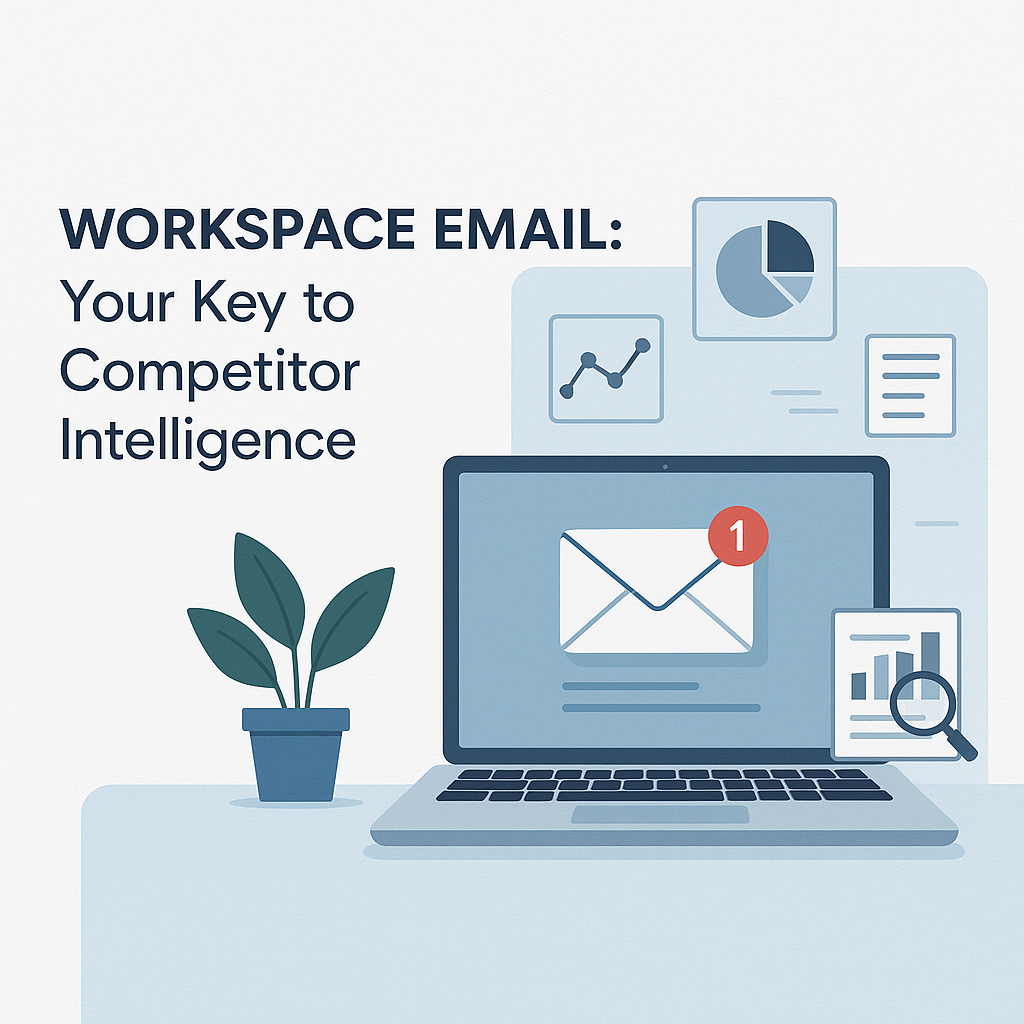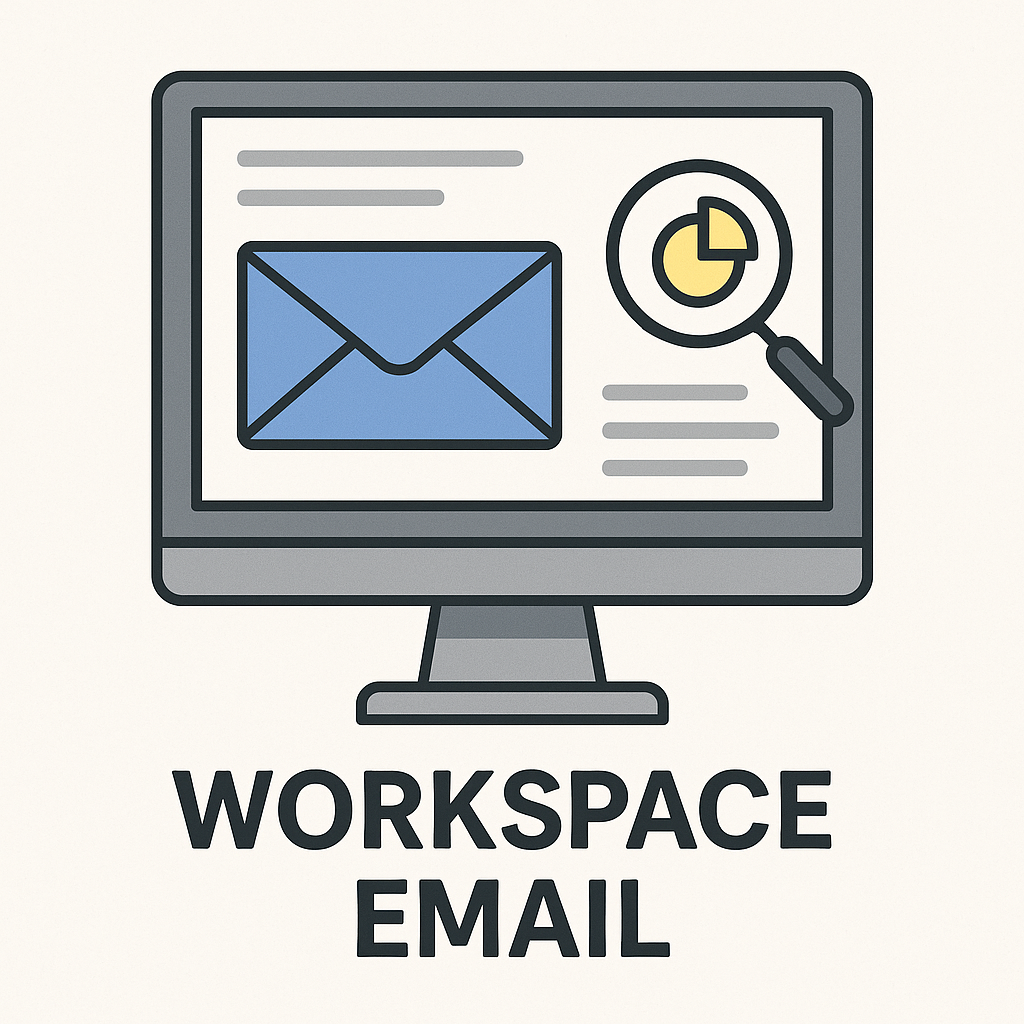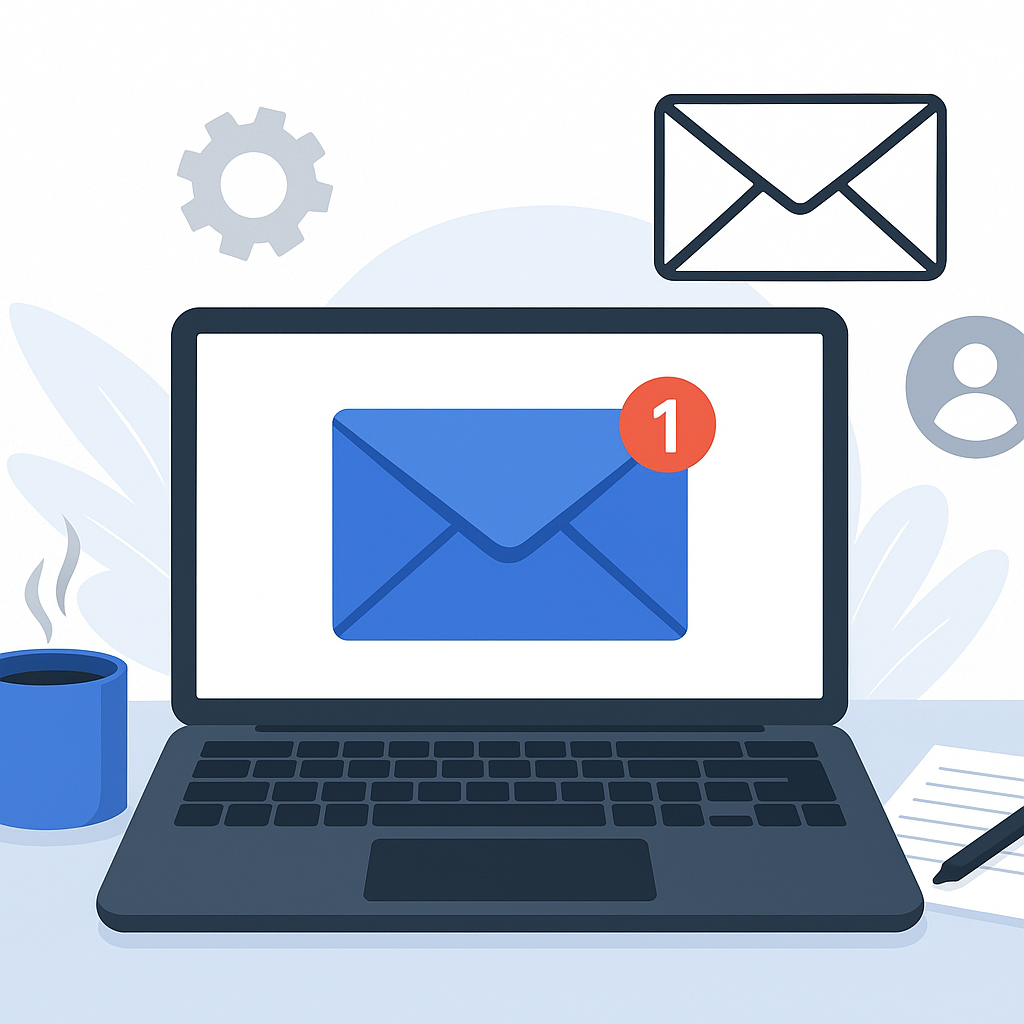Workspace Email: Your Key to Competitor Intelligence

In today's hyper-competitive business landscape, staying ahead isn't just an advantage—it's a necessity. Businesses constantly seek ways to understand their market, anticipate trends, and outmaneuver rivals. While sophisticated analytics platforms and market reports are invaluable, a powerful, often-underestimated resource lies within your daily digital interactions: your workspace email. Yes, the very inbox you manage every day can be a goldmine for competitor intelligence, offering direct insights into your rivals' strategies, customer engagement, and market positioning. This article explores how you can ethically leverage your workspace email for effective competitor analysis, uncovering market trends, and ultimately gaining a significant competitive edge email strategy.
Understanding Competitor Intelligence in the Digital Age
Competitor intelligence (CI) is the process of systematically gathering and analyzing information about your competitors to understand their strengths, weaknesses, strategies, and potential moves. In the digital age, the scope of CI has expanded dramatically. It's no longer just about tracking financial reports or press releases; it encompasses understanding their digital footprint, customer sentiment, product roadmaps, and marketing campaigns. As noted by Sendview.io, "Competitor analysis is the process of researching, analyzing, and comparing your business to other businesses in the same industry. It’s a way for you to understand how your company stands out." This comprehensive understanding is crucial for informed decision-making, innovation, and strategic planning. Without robust business email intelligence, you risk operating in a vacuum, making decisions based on incomplete or outdated information.
The challenge for many professionals is not a lack of data, but the overwhelming volume of it. Identifying genuinely useful signals amidst the noise requires a strategic approach. This is where focusing on specific, high-value communication channels, like email, becomes critical. Your workspace email, when used thoughtfully, can provide direct, unfiltered insights that are often more telling than public statements.
The Role of Workspace Email in Gathering Competitive Insights
Think about the emails you receive daily: newsletters, promotional offers, product updates, event invitations, and customer service communications. Many of these are sent by your competitors to a broad audience, including you, if you've subscribed to their mailing lists. These emails are essentially direct lines into their communication strategies and customer outreach efforts. By subscribing to competitor newsletters, following their product announcement lists, and even signing up for their webinars or demo requests (using a separate, dedicated email address for this purpose, of course), you can build a valuable repository of market research email data.
This data is invaluable for several reasons:
- Direct Communication Insights: Competitor emails reveal their primary messaging, value propositions, tone of voice, and the benefits they emphasize. This is crucial for understanding how they position themselves in the market.
- Promotional Strategies: You can track their sales cycles, discount strategies, bundle offers, and the types of campaigns they run to drive conversions. This informs your own promotional planning.
- Product Development Clues: Announcements about new features, bug fixes, or product updates can signal their development priorities and technological direction.
- Customer Engagement Tactics: Observing their customer service auto-responders, follow-up sequences, and loyalty program communications provides insights into their customer relationship management.
- Event and Webinar Marketing: These emails often highlight industry trends they are focusing on and the topics they believe resonate with their target audience.
Effectively using your workspace email for this purpose requires a structured approach to subscribing and organizing the information you receive. It's about transforming a potential source of inbox clutter into a strategic intelligence asset.
Ethical Considerations and Best Practices for Monitoring Competitor Emails
It is crucial to emphasize that gathering competitor intelligence must always be conducted ethically and legally. The goal is to leverage publicly available information, not to engage in any form of corporate espionage, hacking, or unauthorized data access. When using your workspace email for email competitor analysis, adhere to the following principles:
- Publicly Available Information Only: Stick to information that competitors willingly share with the public, such as through their public newsletters, marketing emails, and website announcements. Never attempt to access private email accounts or internal communications.
- Respect Privacy Laws: Be aware of and comply with data privacy regulations like GDPR, CCPA, and CAN-SPAM. Ensure your data collection practices do not infringe on individuals' privacy rights.
- Use Dedicated Email Addresses: For competitive research, it's highly advisable to set up a separate email account or alias. This prevents sensitive competitor data from mixing with your primary business communications and helps maintain a clear separation, which is also beneficial for security. This practice aligns with principles of maintaining a secure email for business.
- Avoid Misrepresentation: Do not falsely represent yourself or your company when subscribing to competitor communications. Honesty and transparency are key to ethical practice.
- Focus on Aggregated Trends: Analyze broad trends and strategies rather than focusing on minute, potentially private details of individual communications.
By maintaining these ethical boundaries, you ensure that your pursuit of business email intelligence is both effective and responsible, building trust and maintaining your company's integrity.
Key Information to Extract from Competitor Emails
When you're sifting through competitor emails, what specific pieces of information should you be looking for to build a comprehensive picture? The insights can be granular, but when aggregated, they form a powerful strategic overview. Here are key data points to extract:
Product Launches and Updates
Competitors often announce new products, features, or significant updates via email. Tracking these announcements can reveal their product development roadmap, areas of innovation, and how they are responding to market demands. Pay attention to the language they use to describe the benefits and the target audience for these new offerings.
Pricing Strategies and Promotions
Email is a primary channel for communicating pricing changes, special offers, discounts, and bundle deals. Analyzing these can help you understand their market positioning (e.g., premium vs. value-driven) and identify patterns in their promotional activities. As Crayon.co suggests regarding competitor messaging, "Sales and marketing emails, if you can get copies of them, can provide a more informal version of the company’s messaging. You may even start to see variations of messaging being tested by different individuals." This applies directly to pricing and promotional messaging.
Marketing Campaign Messaging and Themes
What are the core messages competitors are pushing? What pain points are they addressing? What emotional appeals are they using? Email campaigns are carefully crafted to resonate with specific customer segments. Understanding these themes helps you refine your own marketing copy and identify potential gaps or opportunities in the market messaging.
Customer Service and Support Approaches
Even automated emails, like order confirmations or support ticket acknowledgments, reveal a lot about a company's customer service philosophy. Look at the tone, the information provided, and any upsell or cross-sell attempts. This can highlight areas where you can differentiate your own customer experience.
Hiring and Partnership Announcements
Emails announcing new hires, especially in key technical or strategic roles, or new business partnerships, can signal areas of growth, strategic shifts, or new market entries. These are often indicators of future strategic directions.
Webinars, Events, and Content Marketing
The topics covered in competitor webinars or the types of content they promote via email indicate their current strategic focus and the issues they believe are most relevant to their audience. MailCharts emphasizes the importance of "gathering data so you can compare a series of emails from each brand you’re tracking to your own," which is essential for identifying these strategic themes.
By meticulously collecting and categorizing this information from your workspace email, you build a rich database for email data analysis, which forms the bedrock of effective sales intelligence email strategies.
Utilizing AI Tools for Efficient Competitor Email Analysis
Manually sifting through potentially hundreds of competitor emails each week to extract meaningful insights is a daunting, time-consuming task. This is where the power of Artificial Intelligence (AI) becomes indispensable. AI-powered tools can automate much of the heavy lifting involved in email competitor analysis, transforming raw email data into actionable intelligence.
AI excels at:
- Automated Data Extraction: AI algorithms can scan emails, identify key entities (product names, prices, dates, keywords), and extract them into structured formats.
- Sentiment Analysis: AI can gauge the sentiment (positive, negative, neutral) expressed in competitor communications, helping you understand customer reactions or the tone of their marketing.
- Topic Modeling and Trend Identification: AI can group emails by common themes, revealing recurring topics, emerging trends, or shifts in competitor focus.
- Pattern Recognition: AI can identify patterns in email frequency, content structure, and promotional timing that might be missed by manual review.
- Summarization: AI can condense lengthy emails or email threads into concise summaries, saving valuable time.
Navigating the sheer volume of competitor communications can feel like an overwhelming task. This is where modern technology steps in. For professionals seeking to extract maximum value from their data without getting bogged down, tools like an ai executive assistant can be transformative. These platforms are designed to automate the tedious aspects of email management and data analysis, allowing you to focus on strategy. By leveraging an ai executive assistant, you can efficiently sift through vast datasets, identify critical patterns, and gain a significant competitive edge email strategy, all while boosting your overall AI email productivity.
Platforms that specialize in email management and analysis, often integrated with AI capabilities, can significantly enhance your ability to perform email data analysis. For instance, AI features within productivity suites, much like those being developed for platforms like Google Workspace, aim to improve collaboration and streamline data handling. As noted by Cloudasta.com, "Google Workspace has recently developed new features and a lot of artificial intelligence within the platform that has eased the collaboration within its services." This trend highlights the growing integration of AI into professional workflows, making tasks like competitive analysis more manageable.
By embracing AI, you move beyond manual tracking and unlock deeper insights, making your market research email efforts far more efficient and effective. This aligns with the broader goal of improving email productivity tips and finding an email overload solution.
Translating Email Insights into Actionable Business Strategies
Gathering intelligence is only half the battle; the real value comes from translating those insights into concrete business actions. The data gleaned from your workspace email competitor analysis should directly inform your strategic decisions across various departments.
Refining Marketing and Sales Strategies
If competitor emails reveal a successful new marketing angle or a highly effective promotional offer, you can adapt these learnings. For example, if a competitor is consistently getting high engagement with emails highlighting customer testimonials, consider incorporating more of that into your own email campaigns. If they are targeting a specific niche with tailored messaging, it might indicate an underserved segment you could pursue. This is key for enhancing your sales intelligence email efforts.
Product Development and Innovation
Competitor announcements about new features can spur your own innovation cycle. If they are investing heavily in a particular technology or addressing a specific customer pain point that you haven't, it's a clear signal to evaluate your own product roadmap. This can help you identify opportunities to leapfrog competitors or fill market voids.
Pricing and Packaging Adjustments
Observing competitor pricing models and promotional strategies allows you to benchmark your own. If competitors are offering aggressive discounts or innovative pricing tiers, you might need to re-evaluate your own strategy to remain competitive or find ways to offer superior value.
Customer Experience Enhancement
By analyzing how competitors communicate with their customers, you can identify best practices or areas where they are falling short. This can guide improvements in your own customer support, onboarding processes, and loyalty programs, ultimately strengthening your customer relationships and providing a significant competitive edge email can help you communicate.
Market Positioning and Differentiation
Ultimately, understanding what your competitors are saying and how they are saying it helps you sharpen your own unique selling proposition (USP). By identifying their strengths and weaknesses, you can better articulate what makes your business different and superior, ensuring your messaging cuts through the noise.
The actionable insights derived from diligent email competitor analysis are what truly drive business growth and market leadership.
Streamlining Competitor Intelligence with Productivity Platforms
Integrating competitor intelligence gathering into your daily workflow requires efficient tools and processes. Simply subscribing to newsletters isn't enough; you need a system to manage, analyze, and act on the information. This is where productivity platforms and smart inbox management strategies become crucial.
Consider how you can streamline this process:
- Centralized Inbox Management: A well-organized inbox is the first step. Tools and techniques for effective inbox management can help you separate competitor emails from your core communications, making them easier to review. If you're struggling with inbox chaos, learning how to organize inbox with smart triage and prioritization can make a significant difference.
- Dedicated Intelligence Folders: Set up specific folders or labels within your workspace email client to automatically file competitor communications. This keeps your intelligence data organized and readily accessible.
- Automation Tools: Leverage email rules, filters, and potentially even specialized CI platforms that can automate the collection and initial analysis of competitor emails. This ties into finding an email overload solution.
- Integration with CRM and Analytics: Where possible, integrate the insights gained from email analysis into your CRM or other business intelligence dashboards. This ensures that competitive data is accessible to relevant teams and influences broader business strategies.
- Regular Review Cadence: Schedule dedicated time, perhaps weekly or bi-weekly, to review the competitor emails you've collected. This consistent practice ensures you stay updated and don't miss critical signals.
By adopting these practices, you transform competitor intelligence from an ad-hoc activity into a seamless, integrated part of your business operations, enhancing your overall email productivity tips.
Case Studies: Businesses Winning with Smart Email Intelligence
To illustrate the power of leveraging workspace email for competitive insights, consider these hypothetical scenarios:
Scenario 1: The SaaS Startup Adjusts Its Feature Rollout
A growing SaaS company subscribed to the newsletters of its three main competitors. They noticed that Competitor A, a market leader, began heavily promoting a new AI-driven analytics feature via email. The emails highlighted how this feature saved users time and provided deeper insights. Simultaneously, Competitor B, a direct rival, sent emails announcing a partnership with a major cloud provider, signaling an expansion of their service ecosystem.
Actionable Insight: The startup realized they were lagging in AI capabilities and needed to accelerate their own AI feature development. They also saw the strategic importance of cloud partnerships.
Business Strategy: They reprioritized their product roadmap to fast-track their AI analytics module and initiated discussions with potential cloud partners. This proactive adjustment allowed them to stay competitive and avoid being outmaneuvered in key technology areas.
Scenario 2: The E-commerce Retailer Optimizes Promotional Cadence
An online fashion retailer meticulously tracked promotional emails from its top five competitors. They observed that Competitor C consistently ran short, aggressive flash sales (e.g., 24-hour discounts of 30%) every two weeks. Competitor D, however, focused on themed seasonal sales with smaller, more consistent discounts (e.g., 10-15% off specific collections).
Actionable Insight: The retailer identified that Competitor C's aggressive flash sales, while driving short-term buzz, might be devaluing their brand. Competitor D's approach suggested a strategy focused on building loyalty and consistent customer engagement.
Business Strategy: Instead of competing with flash sales, the retailer decided to implement a tiered loyalty program that offered increasing discounts and exclusive early access to new collections for repeat customers. They also launched a "Collection Spotlight" email series featuring curated looks with a steady 15% discount, aligning with their brand's image of quality and style over deep, frequent markdowns. This strategy led to higher average order values and improved customer retention.
These examples demonstrate how diligent email competitor analysis, powered by insights drawn directly from competitor communications, can lead to strategic pivots that drive tangible business success.
Conclusion
In the relentless pursuit of market advantage, your workspace email is a potent, yet often underutilized, tool for competitor intelligence. By ethically subscribing to competitor communications and systematically analyzing the data you receive, you can unlock invaluable insights into their strategies, market positioning, and customer engagement tactics. This forms the foundation for robust business email intelligence, enabling you to make more informed decisions, refine your own strategies, and ultimately gain a crucial competitive edge email can help you communicate.
The sheer volume of data can be overwhelming, but with the strategic application of AI tools and smart inbox management practices, you can transform your email from a source of overload into a powerful engine for market understanding and business growth. By integrating these practices, you not only enhance your AI email productivity but also ensure your business remains agile, informed, and ready to tackle the challenges and opportunities of today's dynamic marketplace.
Ready to turn your inbox into a strategic asset? Start by identifying your key competitors and subscribing to their public communications today. Explore AI-powered solutions to streamline your analysis and unlock deeper insights. Your next competitive advantage might just be a click away.



